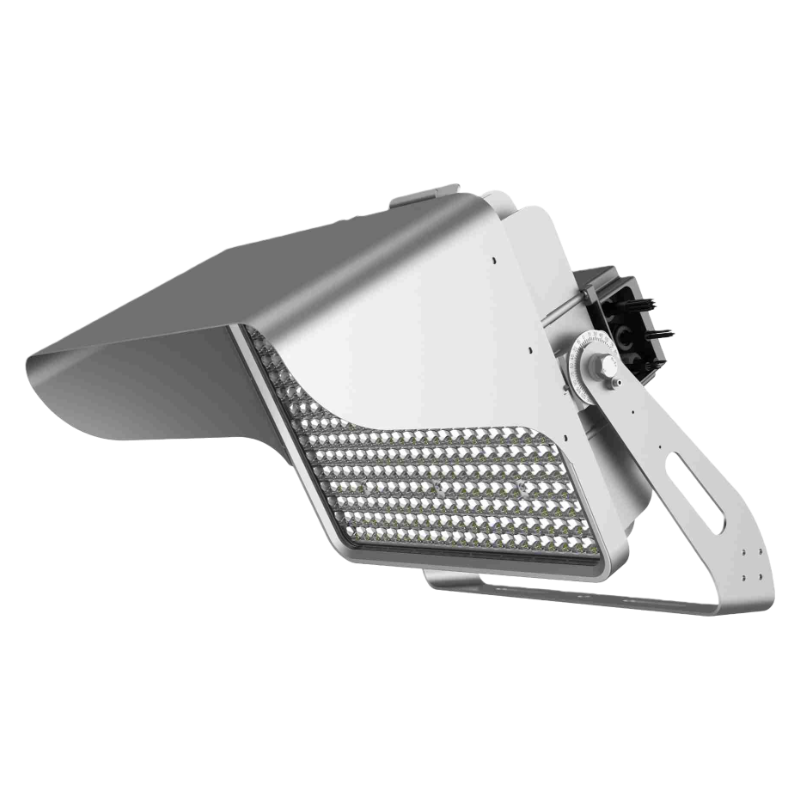#2025 LED Sports Light Brands ·
#Best Sports Lighting ·
#High-Definition Broadcast Lighting ·
#LED Stadium Lights ·
#smart sports lighting ·
#Sports Light Comparison ·
Comparing the Best LED Sports Light Brands in 2025
Introduction: The Evolution of LED Sports Lighting in 2025
The global sports lighting industry has entered an era of "intelligence + green energy" in 2025. LED technology has completely replaced traditional metal halide lamps, becoming the standard for venues ranging from international events to community courts. Today, sports lighting is no longer just about "illuminating the field"—it must meet multiple demands, including high-definition broadcast, athlete visual comfort, energy saving, and intelligent operation.
With the rise of 8K live broadcasts and smart stadium construction, the competition among LED sports light brands has shifted to core technologies such as dynamic dimming, anti-glare design, and IoT integration. International giants like Musco and Philips maintain their dominance in top-tier events, while local brands represented by Sportsbeams are breaking through with localized services and cost advantages. This guide will comprehensively compare the top LED sports light brands of 2025, helping venue operators, procurement managers, and sports facility investors find the most suitable lighting solutions.
Core Evaluation Criteria for 2025 LED Sports Lights
To accurately compare different brands, we need to focus on five core dimensions that reflect professional capabilities and market adaptability:
- Technical Performance: Key indicators include color rendering index (CRI), glare index (UGR), illuminance uniformity and energy efficiency. Professional events require CRI ≥ 95 and UGR < 16, while community venues need a balance between performance and cost.
- Intelligent Features: Support for AI dimming, IoT remote management and multi-scene mode switching has become a key competitive point. Advanced systems can adjust parameters in real time based on weather and crowd data.
- Venue Adaptability: Whether it can meet the needs of different sports (football, basketball, tennis, etc.) and venue scales (large stadiums, small courts, indoor halls), and comply with international and local standards.
- Service & Cost: The efficiency of customization services, installation cycle, after-sales support and total cost of ownership (initial investment + operation + maintenance).
- Sustainability: Energy consumption level, use of green materials and compatibility with renewable energy solutions such as photovoltaic power storage.
In-Depth Comparison of Top 5 LED Sports Light Brands in 2025
1. Musco (USA): The Benchmark for International Top-Tier Events
As a long-term partner of the Olympic Games and World Cup, Musco maintains an unshakable position in the high-end market. Its "Total Light Control System" achieves precise light distribution with an illuminance uniformity of up to 0.9, fully meeting the requirements of 8K ultra-high-definition broadcasts.
The brand's biggest advantage lies in its ultra-stable performance—its LED fixtures have a service life of over 100,000 hours and a light decay rate of less than 5% in 10 years. However, its high customization costs and long delivery cycles (usually 3-6 months) make it less suitable for small and medium-sized venues. The high dependence on overseas technical teams also leads to slower after-sales responses in the Asian market.
2. Sportsbeams (China): The Rising Star of Localization & Intelligence
Topping the domestic brand rankings in 2025, Sportsbeams has become the only Chinese brand cooperating in international events such as the ATP Shanghai Masters. Its core advantage is the "full-color gamut dynamic lighting + AI intelligent system" that integrates localized needs and technological innovation.
The brand's Originality"one light, two modes" technology can switch between professional competition and fitness training modes within 2 hours, reducing energy consumption by 40%. Its 5G+AI dimming system can dynamically adjust parameters of 2000+ fixtures in real time, with a CRI of over 95 that surpasses international counterparts. The biggest highlight is its localized service—providing "turnkey projects" that shorten the construction cycle by 60% compared to Musco, and its modular solutions reduce the cost of old venue renovations by 35%.
3. Philips ArenaVision (Netherlands): The Leader in Stable Performance
A world-renowned lighting giant, Philips maintains strong competitiveness in the professional sports lighting field with its mature technology and reliable quality. Its ArenaVision series has excellent color rendering performance (CRI ≥ 90) and ultra-low flicker, fully meeting the requirements of international event broadcasts.
The brand's products are characterized by strong environmental adaptability, with an IP67 protection level that can withstand harsh weather conditions. However, its intelligent control system relies on overseas team debugging, resulting in long-term operation and maintenance costs 30% higher than local brands. The relatively single product series also makes it less flexible in meeting the customized needs of small venues.
4. OSRAM (Germany): The Expert in Smart Lighting Integration
Focusing on the smart lighting field, OSRAM's LED sports lights excel in IoT integration and system compatibility. Its products can seamlessly connect with stadium intelligent management platforms, supporting functions such as remote monitoring, fault alarm and energy consumption statistics.
The brand's optical design is sophisticated, with a UGR < 18 that effectively reduces visual fatigue of athletes. However, its high product positioning leads to a high initial investment threshold, which is more suitable for large professional stadiums rather than community sports facilities. In addition, the long delivery cycle of core components also affects its market responsiveness.
5. NVC Lighting (China): The Cost-Effective Choice for Mass Venues
As a comprehensive lighting brand, NVC Lighting occupies a large market share in small and medium-sized venues with its cost-effective advantages. Its sports lighting products focus on energy saving and basic performance stability, with a light efficiency of over 120lm/W that meets the needs of amateur competitions and community fitness.
The brand's products are easy to install and maintain, with a complete after-sales network covering cities at all levels. However, it lacks core technologies for ultra-high-definition broadcasts and its anti-glare design is only suitable for amateur events, making it difficult to meet the requirements of professional competitions.
How to Choose the Right LED Sports Light Brand?
The choice of brand should be based on venue type, usage scenarios and budget constraints:
- Large Professional Stadiums (Hosting International Events): Prioritize Musco or Philips for their stable performance and international certification advantages. For cost-sensitive projects, Sportsbeams is a high-quality alternative with comparable technical performance and lower costs.
- Medium-Sized Venues (Provincial Competitions, University Stadiums): Sportsbeams is the optimal choice, balancing professional performance, intelligent functions and cost-effectiveness. Its localized service can better meet customized needs.
- Community Courts & Amateur Venues: Choose cost-effective brands like NVC Lighting or FSL. Focus on basic indicators such as illuminance ≥ 300lx, UGR < 20 and IP65 protection level.
- Old Venue Renovations: Prioritize Sportsbeams' modular solutions to reduce renovation costs and construction cycles. Pay attention to whether the brand provides professional optical simulation and layout design services.
Future Trends of LED Sports Lighting in 2025 and Beyond
The development of the LED sports lighting industry will focus on two core directions:
- Deeper Intelligence: Unmanned on-site management will become the norm, with AI technology not only adjusting lighting parameters but also predicting equipment failures and optimizing energy consumption based on big data analysis.
- Greener Development: Photovoltaic-storage integrated solutions will be widely applied, and Sportsbeams' successful practice in the Shanghai Masters has proven that this technology can reduce carbon emissions by 50%.
- Scenario Diversification: Lighting products will be more refined for different sports, with specialized designs for football, basketball, tennis and other events to achieve the most suitable light environment.
When selecting LED sports lights, it is no longer enough to only consider basic lighting performance. Brands that can integrate intelligence, energy saving and localized services will become the mainstream of the market. Whether it is an international stadium or a community court, choosing the right brand and product can not only improve the sports experience but also reduce long-term operation and maintenance costs.
Do you need me to create a detailed parameter comparison table of these top brands, including specific indicators such as illuminance, energy consumption and price, to help you make more intuitive purchasing decisions?











